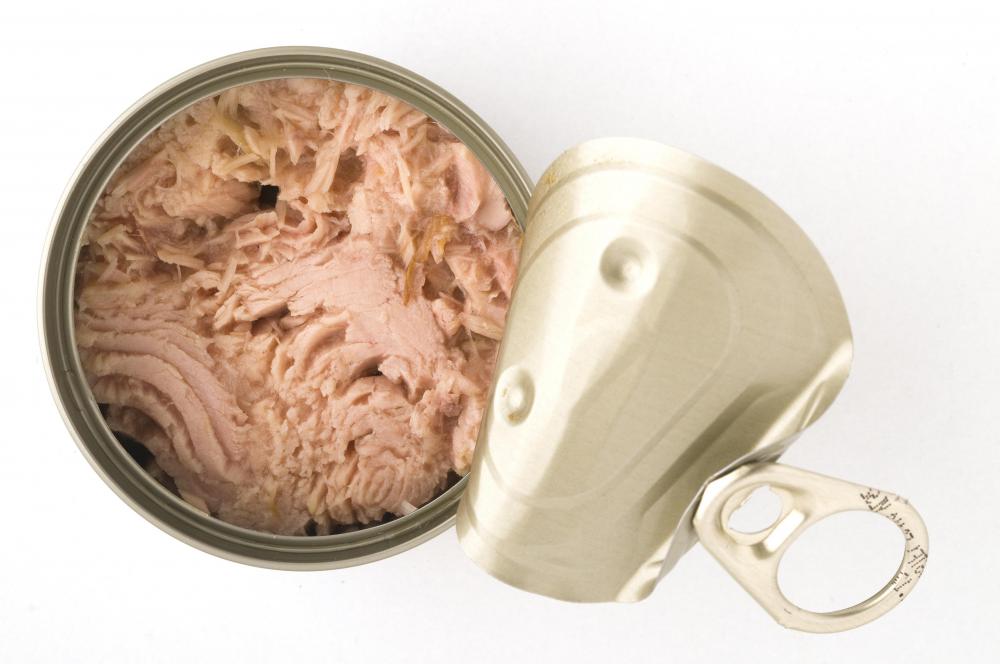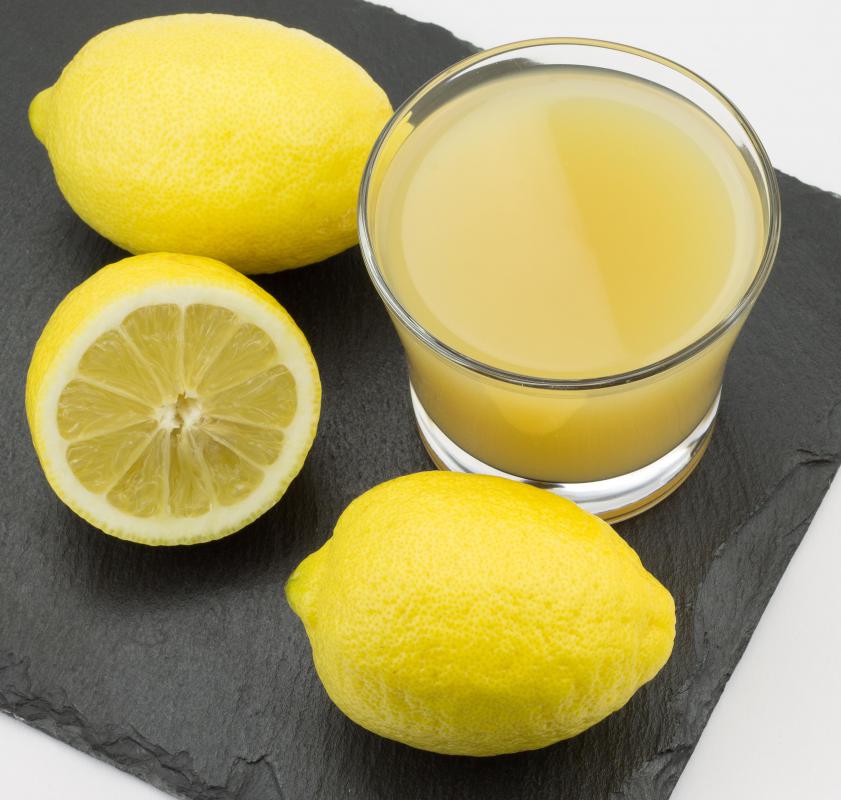At WiseGEEK, we're committed to delivering accurate, trustworthy information. Our expert-authored content is rigorously fact-checked and sourced from credible authorities. Discover how we uphold the highest standards in providing you with reliable knowledge.
What Is Tuna Salad?
Tuna salad is a spreadable dish most often used as a topping for sandwiches, pasta, and green salads. There are various recipes, but most contain a base mixture of chunk tuna mixed with mayonnaise or salad dressing. Other ingredients often used in tuna-based salads include pickles, onions, and dill. In most cases, the mixture is refrigerated and served cold. Tuna salad is a popular dish for many low-calorie and high-protein diet plans.
Sandwiches made using tuna salad can be made using any type of bread, however, because the mixture can be moist, breads with higher density usually work best. Some bread types with high density include rye, pumpernickel, and large hoagie buns. The breads can be served toasted or direct from the package. Some common toppings for these sandwiches include lettuce, tomato, and cheese.

Green salads made using tuna are popular not only for the flavor, but because of their low calorie content. Many popular diet plans include green garden vegetables topped with various types of tuna salads. In most cases, tuna salads intended for dieting purposes are made using low-calorie, low-fat mayonnaise. Most any type of pasta can be used with tuna-based salads, but the most common types are shaped pastas such as bowtie, spiral, or shells.

Tuna used for making salads is most often purchased in cans, already chunked and ready to mix. Canned tuna is typically packed in either oil or water, and is designated as either light or white. White tuna is much more expensive than light varieties and usually comes from a type of tuna called albacore. Tuna can also be purchased fresh or frozen.
The nutritional value of tuna is one of the reasons it is such a popular choice for both snacks and main dishes. Tuna has no carbohydrates or sugars, but is very high in protein and iron. Tuna also offers trace amounts of vitamin A and calcium. Consumers should be aware that tuna packed in oil could be high in fat content, because even when drained, some of the oil adheres to the fish.

Some research seems to indicate that mercury levels in tuna may be too high for it to be eaten on a regular basis, however, those involved in the fishing industry claim that the research is exaggerated. Consumers who have concerns as to the safety of tuna should make it a point to read the research and make their own determinations, or to consult with their physicians. Some studies indicate that regular tuna consumption might pose some hazard to unborn babies, so pregnant women should probably consult with their obstetrician before making tuna salad a regular part of their diet.
AS FEATURED ON:
AS FEATURED ON:



















Discussion Comments
I have always liked tuna salad for sandwiches, but now I can't make it with anything less than solid white albacore tuna. The inexpensive chunk light tuna is almost too mushy for words. If I have to make a low fat tuna salad, however, I will used the chunk light tuna in water and drain it very well.
My mother's tuna macaroni salad recipe called for a whipped salad dressing instead of mayonnaise. There was a specific brand of salad dressing called Spin Blend that was mostly sold in the Midwest. In fact, a lot of the recipes from that time specifically called for Spin Blend, not just any brand of salad dressing or mayonnaise. Spin Blend had a tangier bite than mayo, probably because it contained both lemon juice and white vinegar. It may have also contained some horseradish.
I always thought any salad dressing made an easy tuna salad that had more zing than one made with mayonnaise. We would also add chopped sweet pickles and chopped hard boiled eggs to the chilled pasta and canned tuna.
Post your comments